COVID-19 measures continue worldwide and with numbers in Peru still on the rise, life at EV is far from returning to normal. We are keeping our spirit up even if food may have been sporadic or unavailable at times. With a great team and good food management, as well as taking advantage of the natural environment around us, animals, volunteers and workers are well feed.
At the end of the month volunteer were allowed to visit the village with limitations again, with many taking advantage of the internet connection and talking with relatives and friends at home. Communications had been limited to the occasional text for the last two months, with volunteers not allowed in the village and the opportunity to communicate was appreciated by all.
It is amusing to know that although we have nearly 180 hectares to “play” in, with very few limitations in place, sometimes we still crave contact with the outside world and that touch (smidgeon, hint, dash) of modern living in Bello Horizonte across the river.
A special thanks needs to go out to Douwe, Olivia and family as during this difficult time they are doing their utmost to ensure all volunteers and staff get everything they need. They made it possible to be it contact with home, get information from the outside world, or bring back an unexpected treat with the shopping. We are all so very fortunate they are so dedicated to their dream and the people participating in it.
 Monkeys
Monkeys
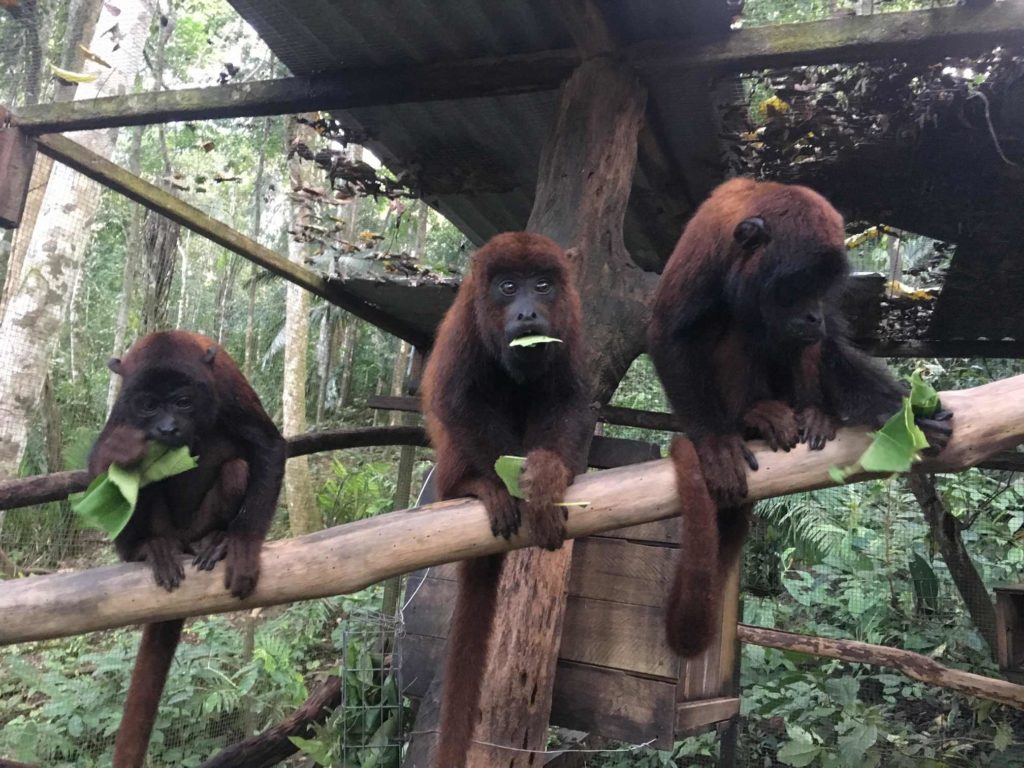
Howler monkeys and their condition are being monitored very closely while young. This includes regular weight checks and stool sampling, beside the clear focus on the right food. These close checks paid off in May as both Kaira (female Jurua red howler monkey) and Armando (male Jurua red howler monkey) got lose stool and lost weight. We directly reacted with extra care and daily monitoring. They were taken on leaf walks to the plantation and extra time was spent encouraging them to eat leaves, an action we successfully used for other howler monkeys before, when they arrived at a young age. Both monkeys successfully gained weight after just a few weeks of this extra care.
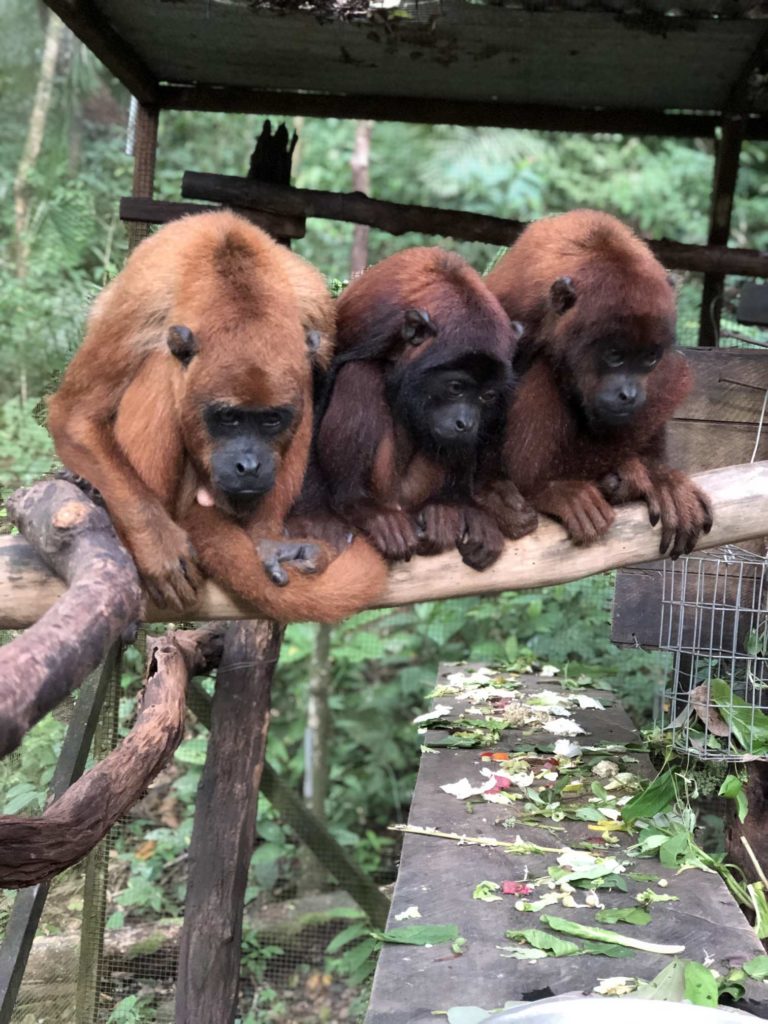
The monkeys which roam freely through the centre enjoy their freedom by playing and exploring. The wild comes with its own risks, which Kaira did not know when entering the peccary enclosure. She was badly injured by the peccaries. After a thorough examination the tough decision was made to euthanize Kaira, as the extensive wounds were just too much for her body to bear. Losing any animal is a tough emotional journey, especially as the whole team got to know her personality over the previous weeks. The remaining four Howler monkeys are in good health with extra awareness still given to Armando and now as well Alaya (female jurua red howler monkey) who in a short time had befriended Kaira and was often in her company.
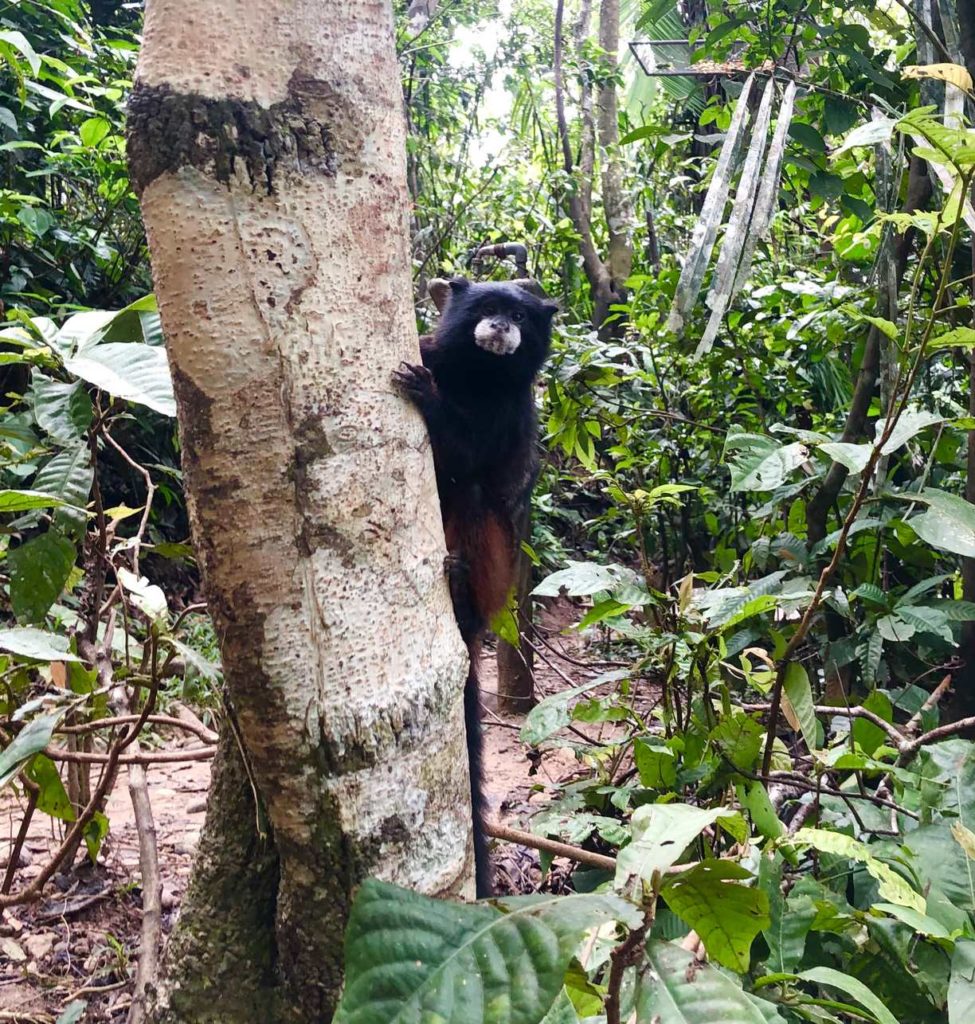
Ezra (young female Spixs white fronted capuchin) is one of the monkeys that has had a lot of contact with humans. Even if she is adapting very well to the outside, she still spends a lot of time around the volunteer kitchen and other buildings. This said, it is great to see her confidence and interaction with other monkeys increasing on a daily basis.
Daytona (young female large headed capuchin monkey) and Tonka (male Andean saddleback Tamarin) are enjoying their newfound freedom. At the end of the day all three monkeys are still eager to return to the security within Lulu enclosure.
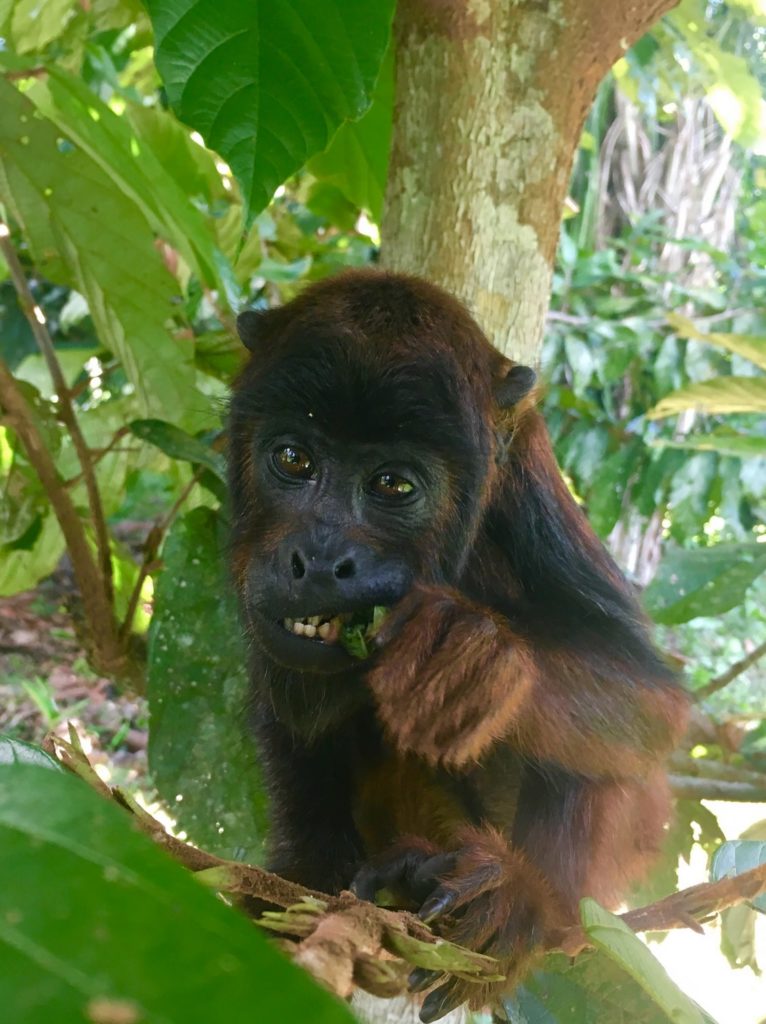
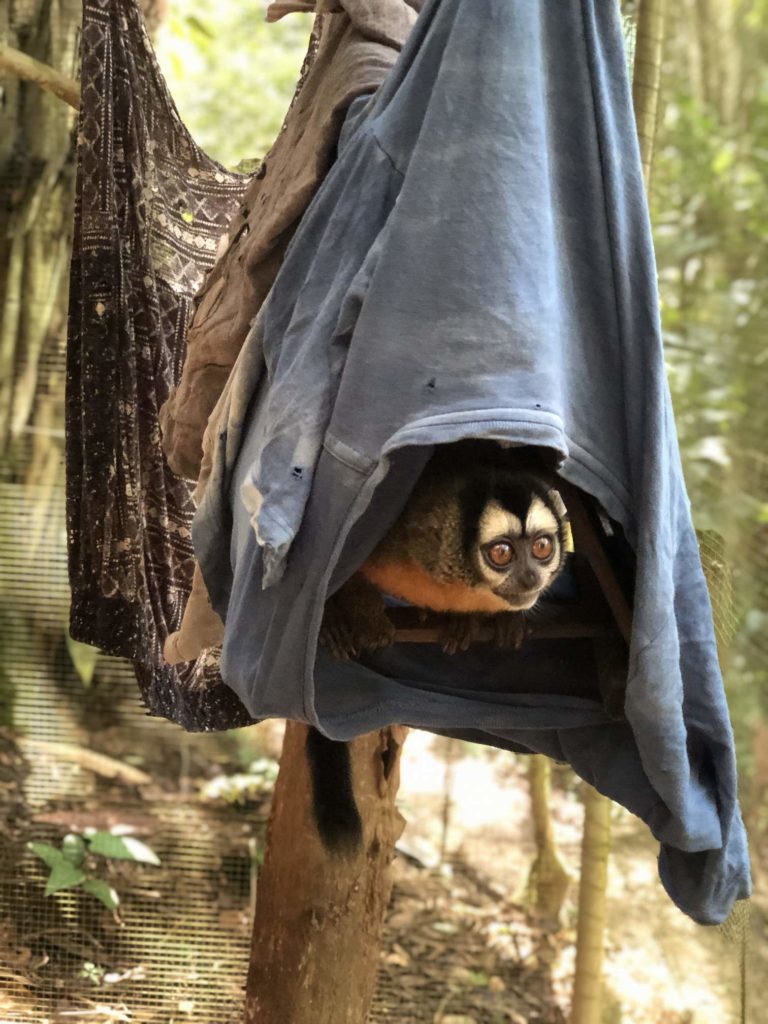
 Other Animals
Other Animals
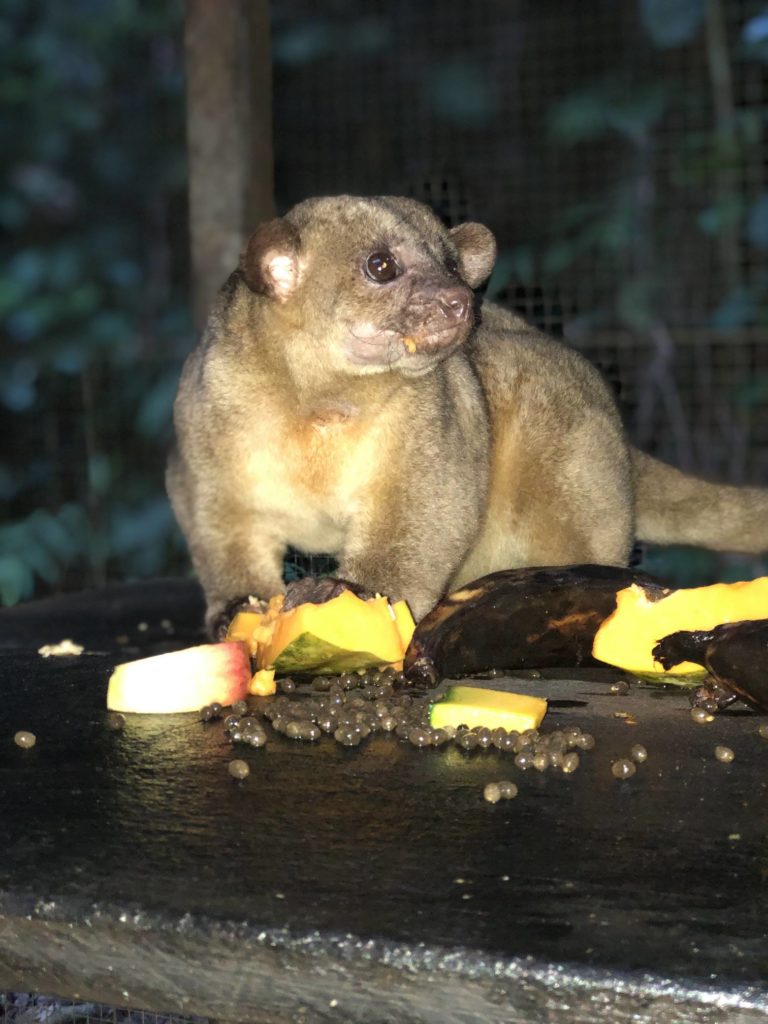
Soft-releasing animals is a very important part of EV. Chosko (male kinkajou) who moved into Tupak enclosure in the latter parts of last month was given the all clear, and a specially installed hatch was left open giving Chosko the option to come and go as he pleased, while still having the benefit of a meal provided each night. Chosko was seen often for the first week, returning for sleep in the mornings. He has since vacated the premises and it appeared opportunistic opossums were helping themselves to his evening meal. There has been a lot of noise recently from Kiko and Kila (male and female kinkajou) close to the family house. It is unknown if Chosko was visiting or if it is merely coincidence. Kiko remains in Tiliku enclosure for the month, awaiting his wounded tail to heal completely before letting him run rampart in the outside world again.
Mojita and Margarita (female agoutis) spent the last month coming and going from Rincay enclosure. As Mojita showed very little fear nor awareness of other animals and humans the decision was made to let her join the other agouti in Pepito enclosure. It is never an easy decision to enclose an animal again, but the possibility of her getting injured or worse was too high. Mojita has settled in well with the other agoutis (males Doquino and Jope and female Daikiri) and is sighted every day coming down at feeding time. Margarita still enjoys the freedom of EV and can be seen a few times each week meandering between the bodega and the family house.
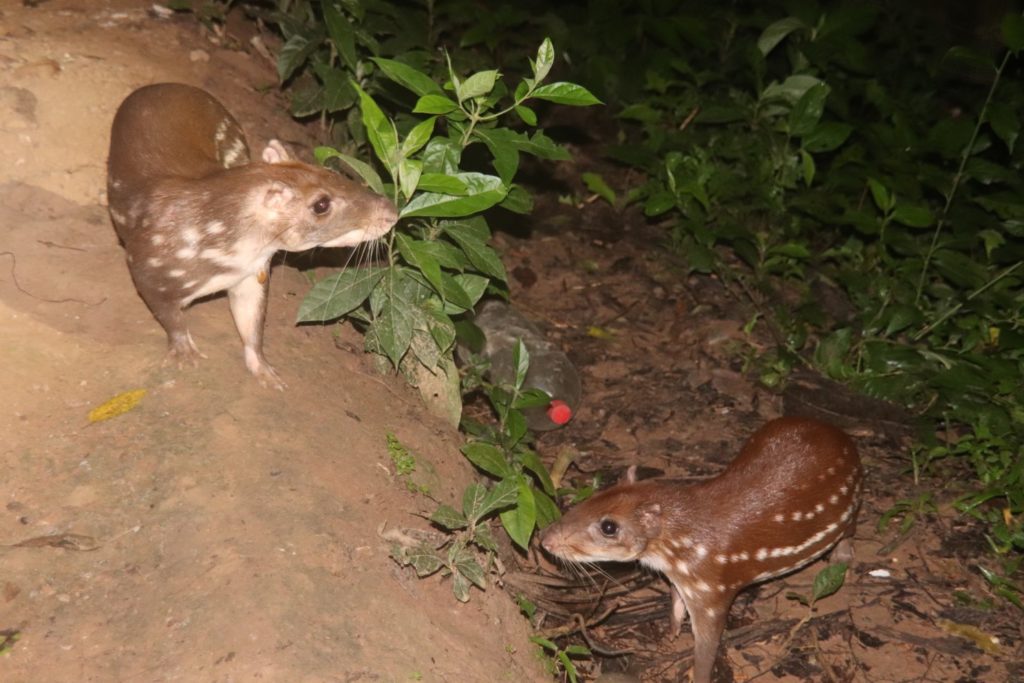
EV’s aim is to give animals a second chance in the wild if possible. This is the ultimate success story when dealing with any animal. Kapa (female Paka) was released this month and even if we thought she may befriend her neighbour Sakura (female Paka) she embraced freedom vigorously and was not seen after her initial release. A few weeks later Kapa was seen again near the volunteer kitchen with a minor injury. A volunteer was able to transfer her back into Momo enclosure for treatment. She will be set free in the next few weeks as soon as she fully recovered.
Machico, who is with us since the start of EV, was out working around the boundaries of EV, taking care of the replanted trees, returned with Katara, the razor billed curassow which left last month. Katara had lost a little weight but was in good overall health. She was again released within the yard at the family house. As she is not scared of humans and so easily caught that she would be a welcome addition to a lot of local dinner tables.
 SUST Animal Orphan Hospital
SUST Animal Orphan Hospital
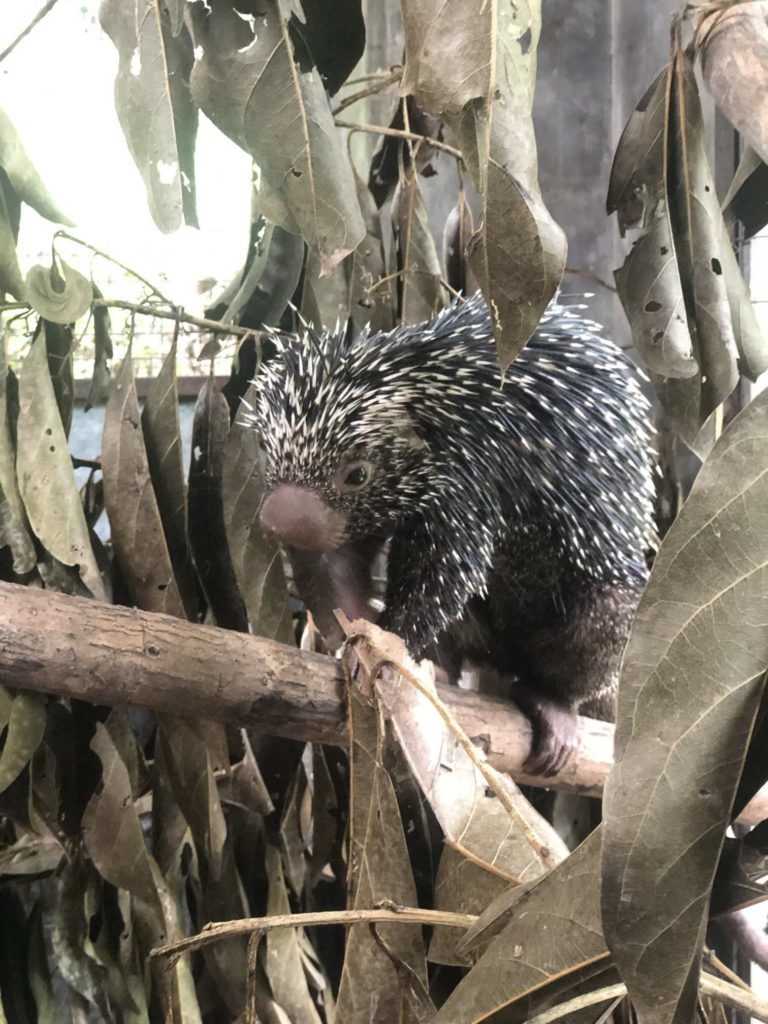
Released in March, Casha (female porcupine) was found with an injured tail and a swollen face one evening. She was weighed prior to treatment and although she was very eager when food was offered, she had in fact put on weight while fending for herself which is a very positive sign. Casha remains in the SUSTAOH where her injuries are healing as expected.
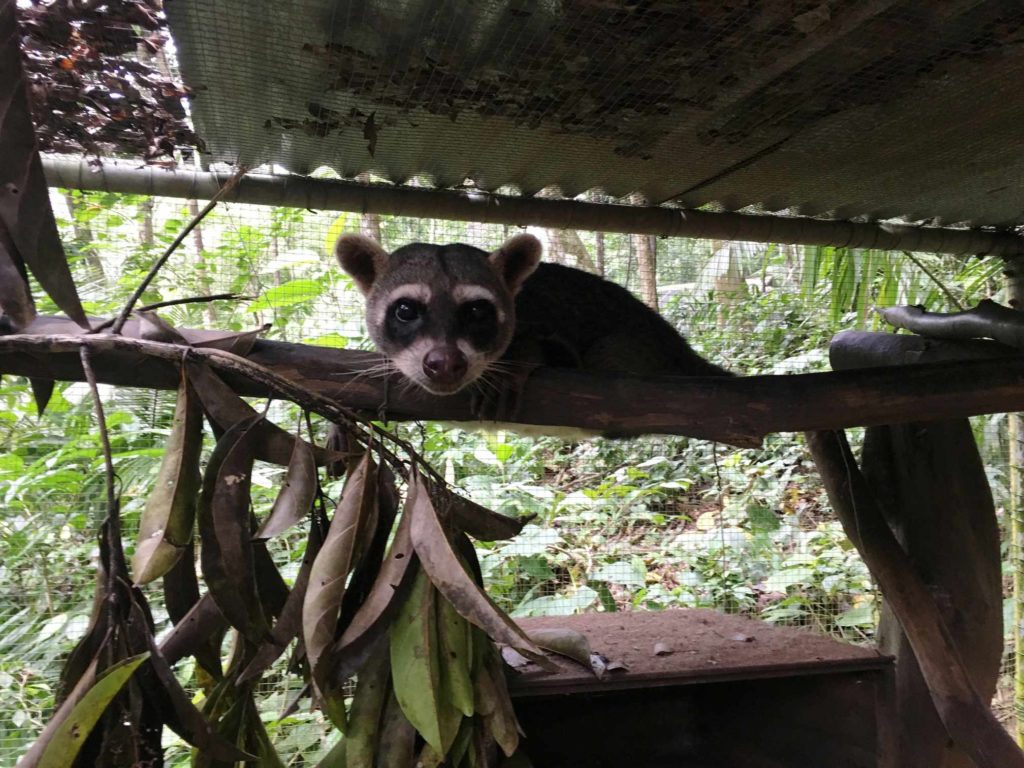
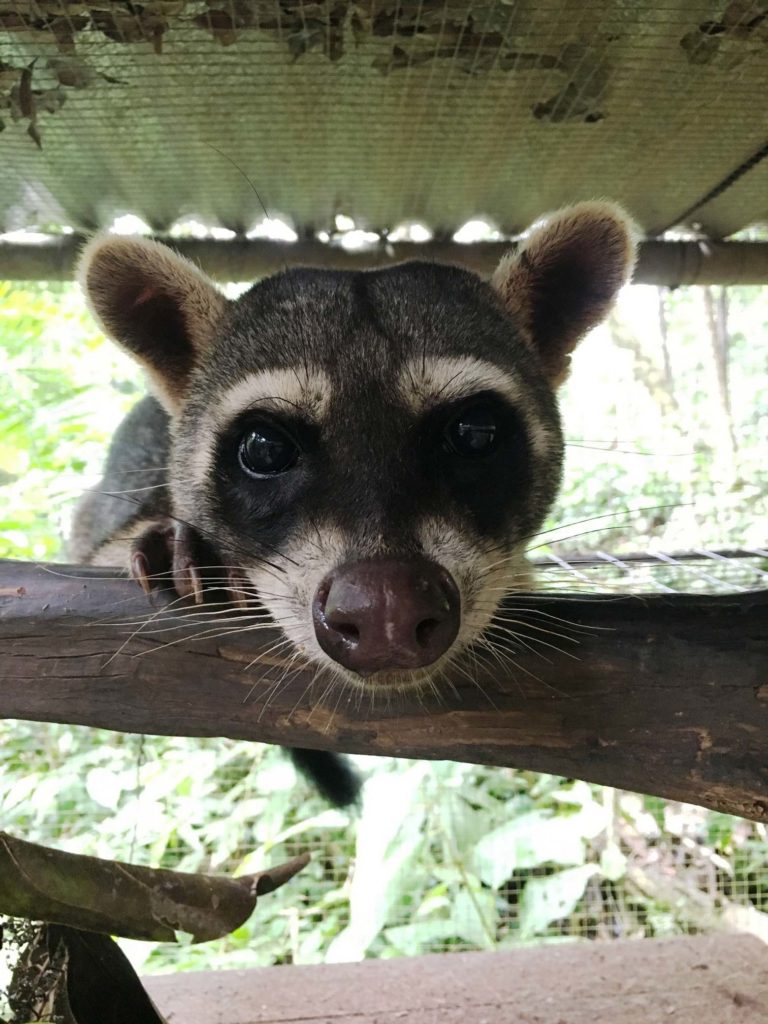
Rumani (crab eating raccoon) was moved to Pepe enclosure as soon as the space became available as raccoons do not react well when living in cement enclosures. As the month has progressed, Rumani is using his damaged foot more and is gaining confidence in climbing and balancing again. It won’t be long and he will be free to come and go as he pleases.
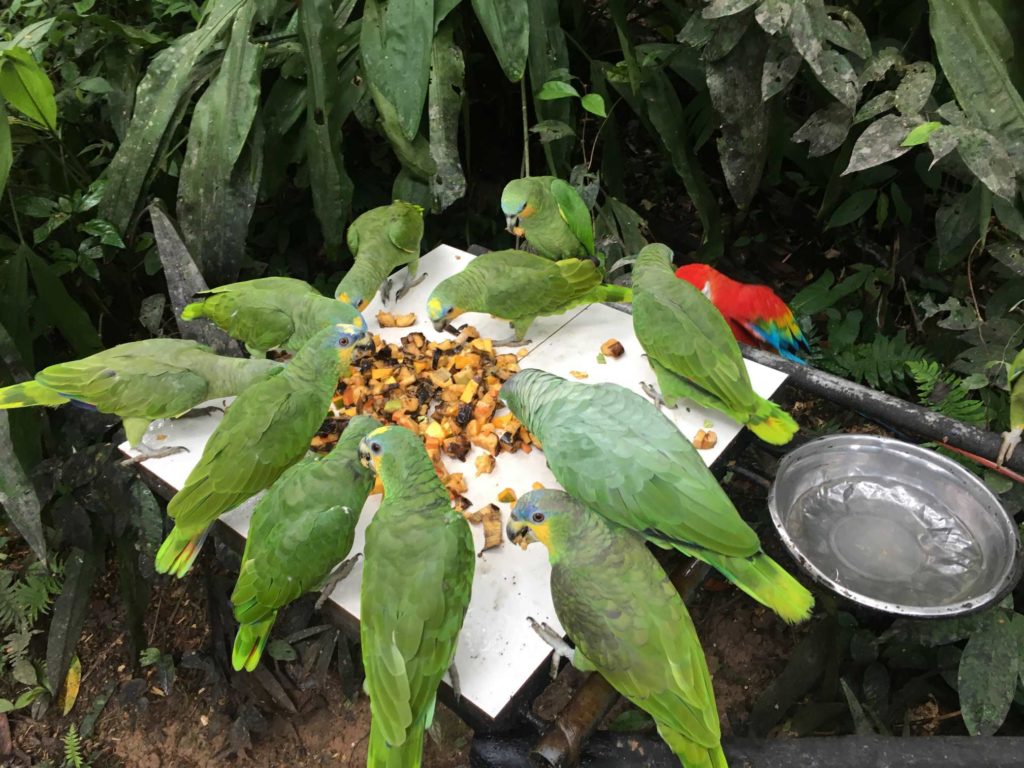
Some individuals of the current group of parakeets at the SUSTAOH came with both their wings cut to an extend which makes it impossible for them to fly. They were moved to smaller cages ensuring they were unable to injure themselves while we oversee their recovery.
 New arrivals
New arrivals
Another month with no new arrivals, which has allowed volunteers and staff more time to focus on the existing animal health and wellbeing.
 Construction and other
Construction and other
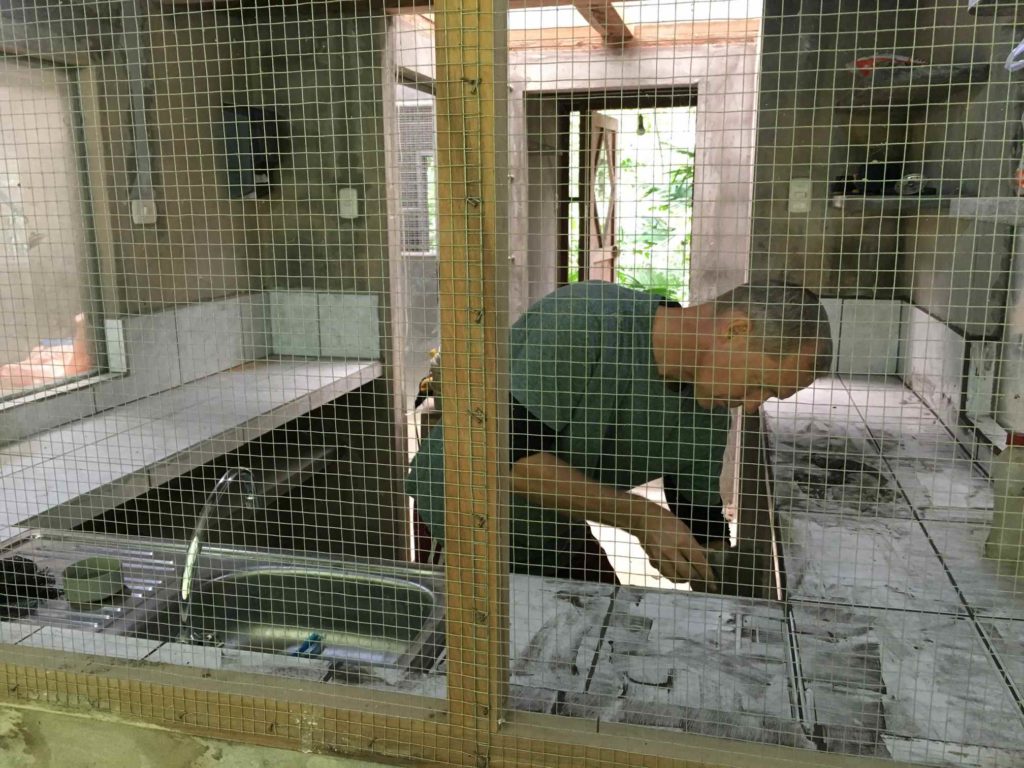
Small jobs still need to be done at the Quarantine in between the general day to day necessities.
This month was also used to construct a new space for recycling. This allows any recycling to be stored out of the way and away from the monkeys prior to being sent to Curimana for disposal.
Work has started on an additional toilet for the volunteer house and anybody who has been lucky enough to experience life at Esperanza Verde will appreciate the work that goes into what at first glance seems like a simple task. But we learned to put a great deal of planning and labour into each task to ensure smooth building period. Whether it is gathering sand and stones for cement, or two days earthworks completed by Geiler on the end of a pick and shovel.

